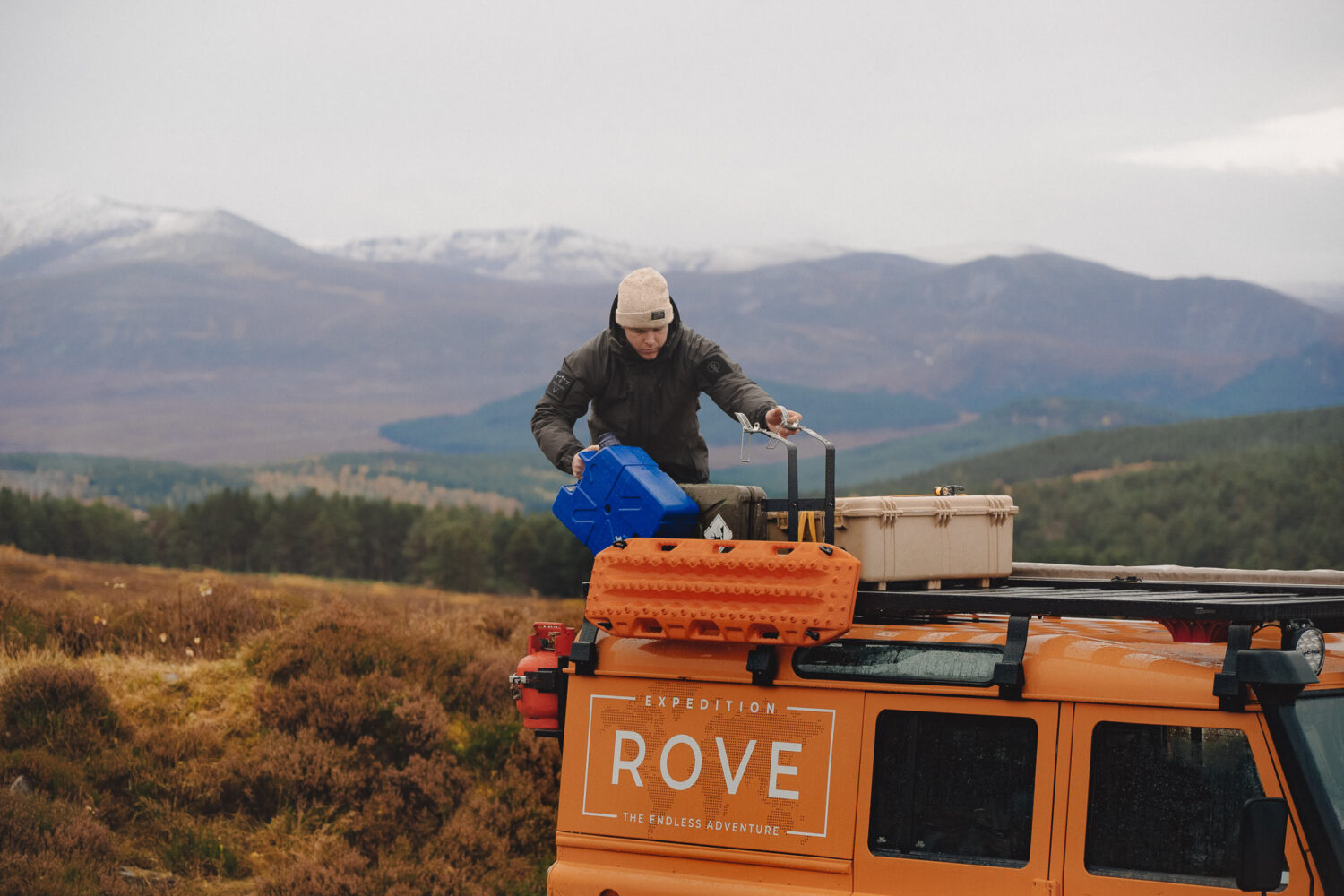During their overland trip to South America in a Discovery 3, Andy and Mary Hannah of Expedition Rove bought their 2010 Land Rover Defender 110 sight unseen from a UK auction. The couple was in Bolivia on their first big trip together and a pact was made. If they won, they would drive their newly acquired Defender to Africa.
Although their plans didn’t come to fruition due to the global pandemic, the couple traveled to the Arctic Circle and learned a lot along the way. They admit the build is still a work-in-progress, but there’s nothing like spending quality time in a vehicle to figure out how it works best. For Mary Hannah and Andy, inside living space has become king, and they’re on their way to achieving the perfect interior to suit their travel style, activity level, and needs. Here’s a glimpse into the interior of Expedition Rove’s 2010 Land Rover Defender 110.


Sleeping Platform and Storage
“We originally built our Defender, Tango, specifically for our Cape Town to London trip. For that trip, we wanted to work outside the vehicle rather than from inside it, and with that, we planned to get a rooftop tent from Front Runner for our sleeping arrangements. But, when Covid hit, we ended up having to ship our Defender back from South Africa and pivoted our plans to the Arctic Circle.
Knowing that we’d experience strong winds and freezing temperatures in the Arctic during winter, we were forced to rethink our setup. We opted to build a simple yet effective bed platform inside our rig to allow us to sleep inside where we’d be sheltered from the conditions. We’re so glad we did. The winds weren’t roof-tent friendly, and the interior sleeping arrangements allowed us to have some refuge from -6 °F (-21°C) temperatures. If there’s one thing we learned from this trip, it was to have an inside option for cooking and to sleep (even if it’s only for emergencies), no matter your rig.
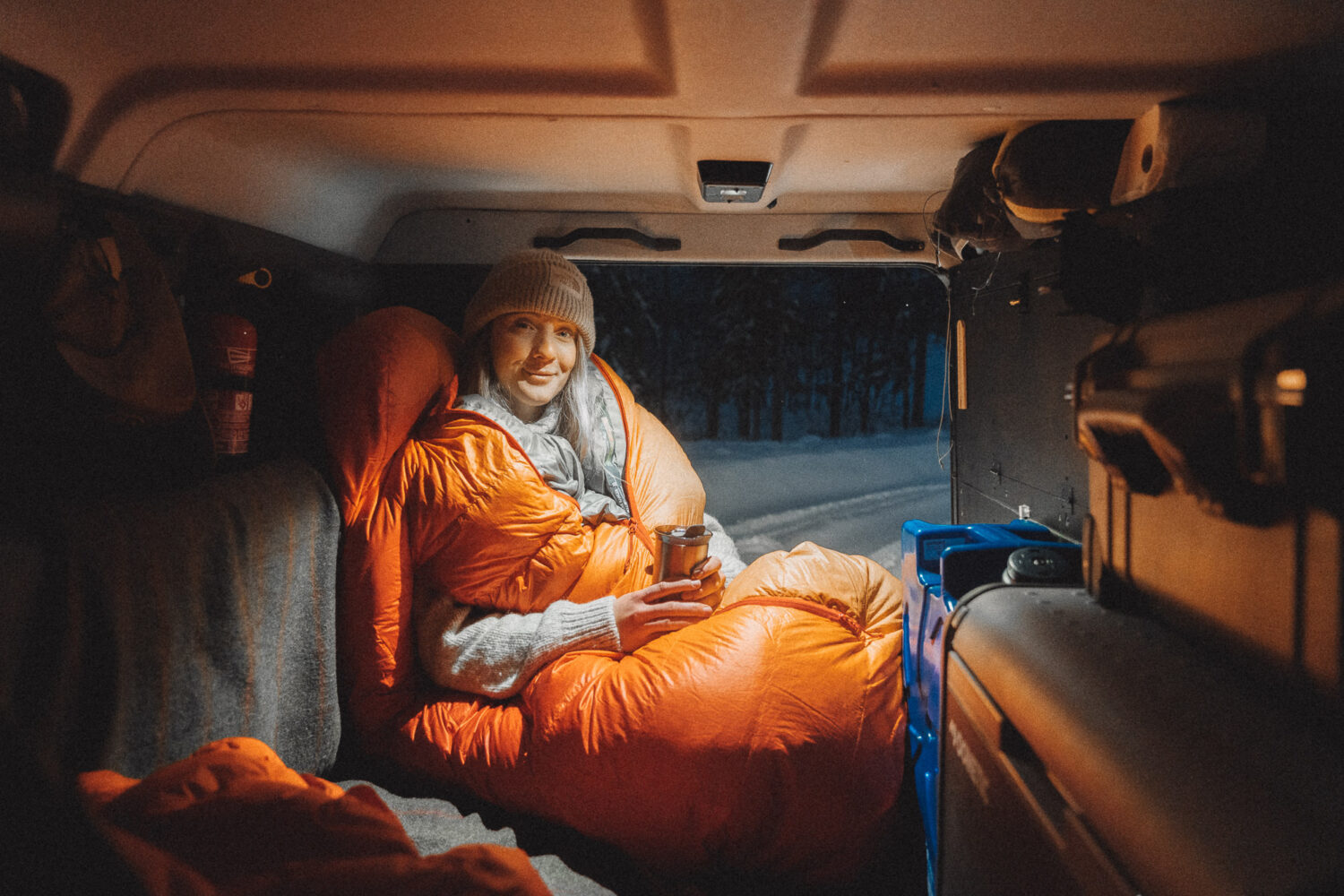

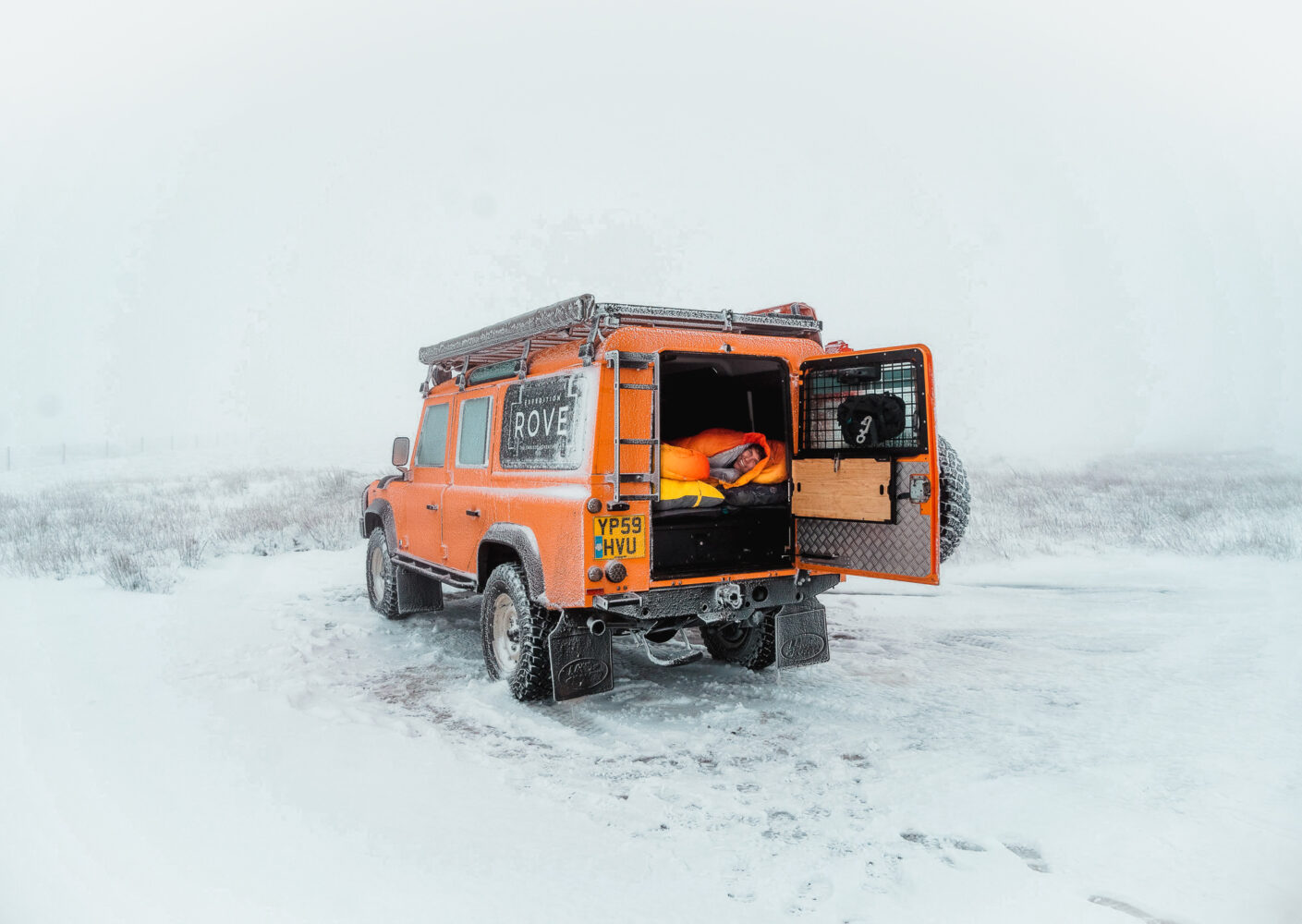
Now back in the UK, we’re preparing for our next leg. We’ve debated between a hard-shell roof tent for ease of setting up and breaking down or our dream setup of having an Alu-Cab pop-top roof conversion. [The pop-top] would give us the best of both worlds: a quick, easy setup and a liveable interior space where we could actually cook, work, and stand up inside. Gone would be the days of wiggling around like a fish out of water to get our pants changed.
Since space is limited on any big journey, we try to be overly practical about what we choose to bring. For that reason, we love a good versatile sleeping bag and blanket (we use Therm-A-Rest for both) rather than bulky bedding. They’re easy to pack down when needed, can be used for on-foot adventures, can be unzipped and used as a blanket in warmer weather, and can be fully zipped to keep you warm as the temperature drops.
With our current setup, we pack everything down when we’re not using it and store it in the space above our internal gullwing box.”
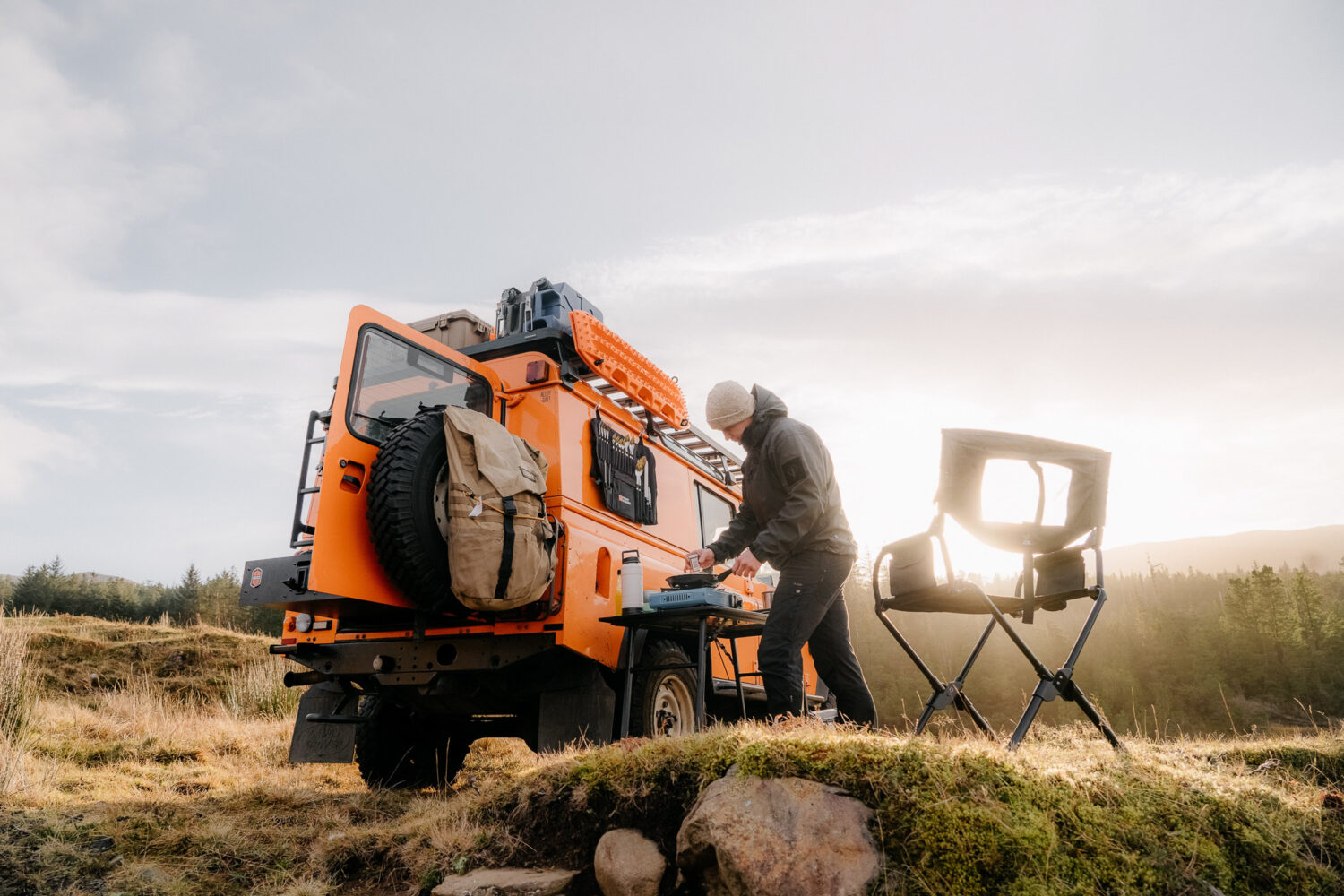
Kitchen Items, Food, and Water Storage
“We have a Front Runner Gullwing that stores all of our kitchen items. In preparation for our recent Arctic trip, we modified the Gullwing box slightly by cutting out a fold-down “door” to the back panel to access our kitchen items from both the inside and the outside of the rig. Condiments live in our Front Runner Gullwing, and any dry foods that don’t fit in the Gullwing can be found in our Front Runner Drawer system.

All of our fresh food lives in our Dometic CFX 55IM. This singular piece of gear was a game- changer for life on the road and is easily one of our favorite upgrades we’ve made.
[Trash is stored in] a Trash-a-roo on our spare tire. We’ve had ours for about two years, and even when it started to crumble, we just got a new patch of fabric and resewed it up.
We use a 20-liter Lifesaver jerry can [for water] that has a built-in filtration system as our primary source of drinking. It’s a beauty because you can fill it up from rivers, lakes, etc., taking some pressure off of finding water when you’re a bit further away from civilization. Since our Lifesaver is usually stored on the roof, we also keep a 3-liter water jug stored under the drawer system for easy cups of tea, coffee, cooking, etc. And lastly, we each have a 1-liter water bottle that we keep up front with us for drinking water throughout the day.”
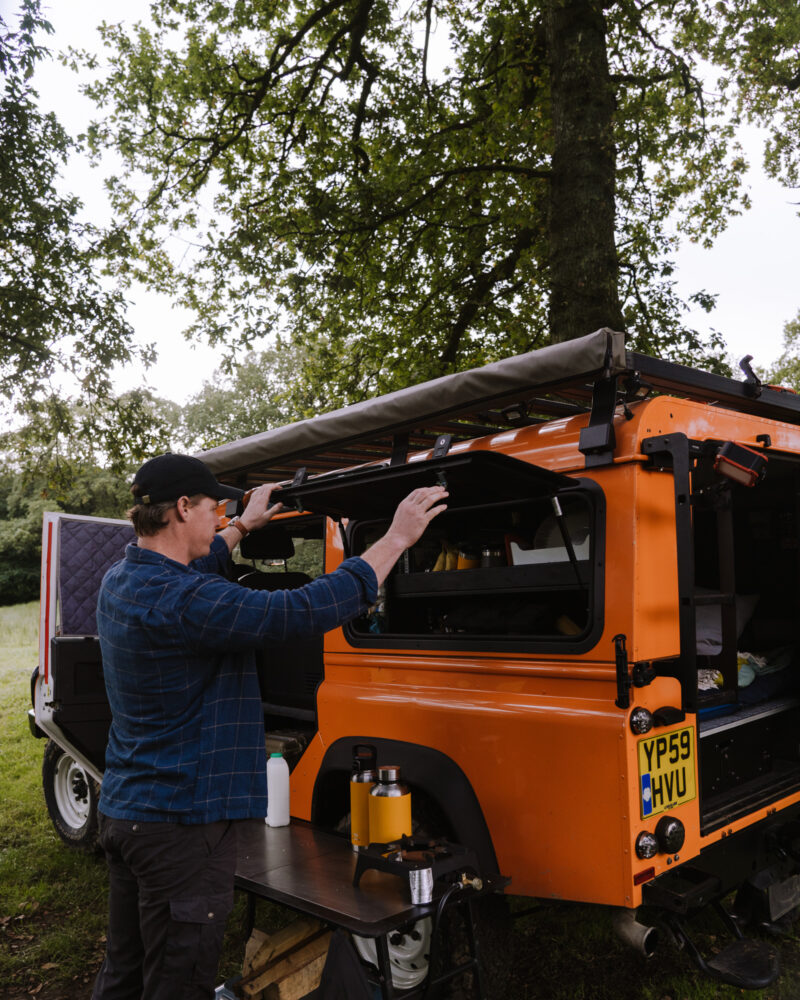

Camp Life: Table, Chairs, Clothing, and Toiletries
“We use Front Runner Expander camp chairs, which fold up perfectly to fit into our Front Runner drawer system.
To keep things simple, we each have one 90-liter Osprey duffel bag, and whatever clothing items you can fit in there, you can bring. These live in the back of the rig when we’re on the move, and we put them up into the front seats when we’re set up for camp to give way to our “bed” in the back. We each have an Osprey Ultralight washbag roll in which we store individual toiletries. We also have a small bag that lives in our Front Runner drawer with our toilet paper, shampoo, conditioner, baby wipes, and baby powder (for those showerless days).
We keep all of our miscellaneous items (hiking gear, backpacks, recovery gear, spare parts) in two larger Pelican boxes on our roof that are locked up and locked down to the roof rack so we can keep them up there year-round.”
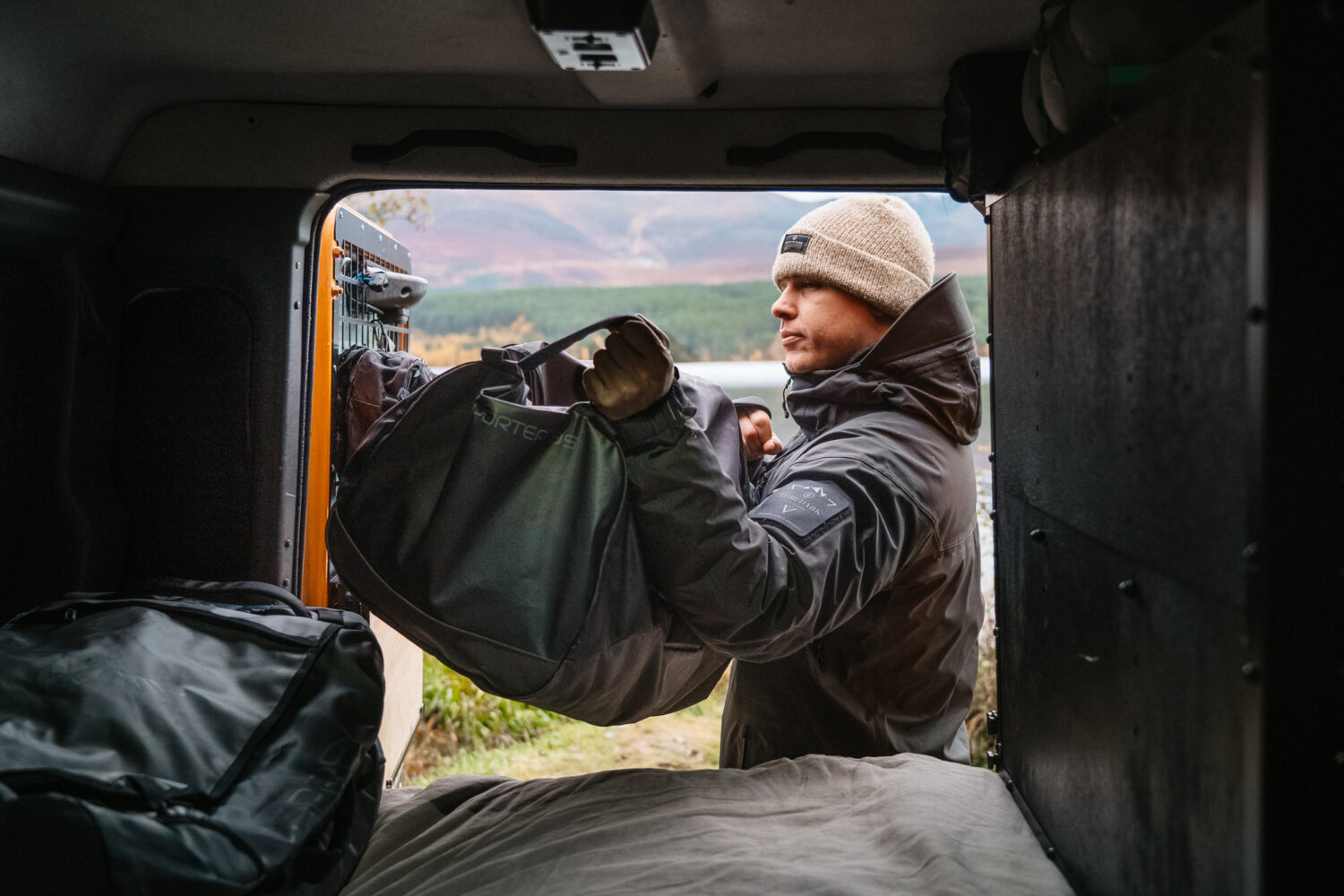
Dual Battery System
“Our dual battery system is made up of two Odyssey batteries and a Redarc BCDC charger that live under the passenger seat. Our inverter is mounted behind our center console for easy access for charging electronics from both the front seat and the back.
To keep everything protected, we keep most of our electronics inside a Pelican case which is then stored inside our rig, out of sight from onlookers. Having them in a case makes it easy to bring them with us anytime we leave the vehicle for an extended period, so we don’t have to worry about theft.”
Tools and Spare Parts
“We use a good ol’ Pelican box for Andy’s toolbox, which slides perfectly under the bed platform behind the driver’s seat. Beyond what’s in our roof boxes, we also keep our MaxTrax, Hi-Lift jack, jerry cans (fuel and water), and a slide-out table for food prep and meals, all securely stored on our roof rack using Front Runner brackets. It’s been nice having a go-to place for everything that’s out of the way, but easily accessible when the time comes.”
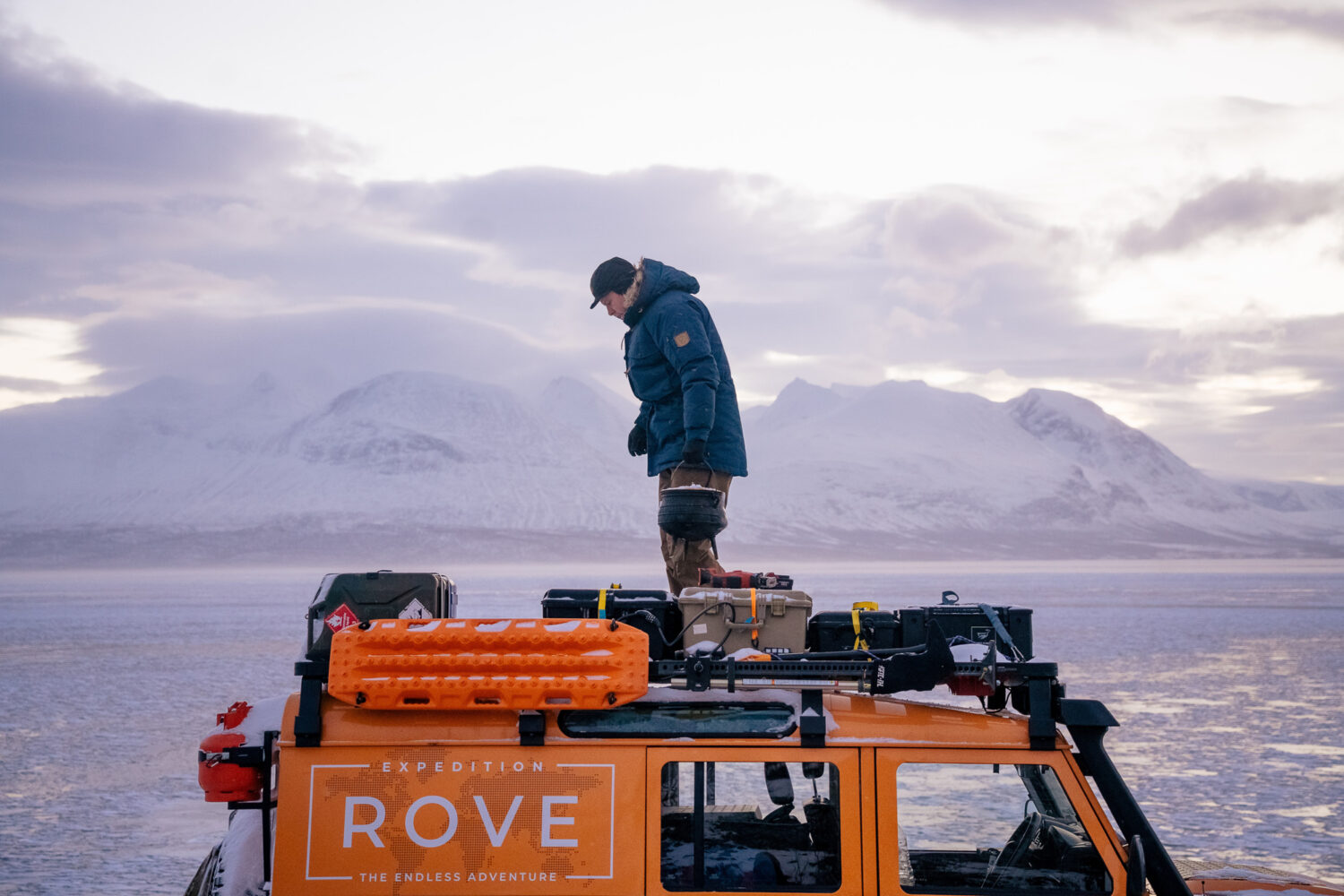
Specifications
Therm-A-Rest LuxuryMap sleeping pads
Therm-A-Rest down coupler
Front Runner Gullwing window
Front Runner Land Rover Defender 90/110 drawer system
Dometic CFX 55IM
Trash-a-roo
20-liter Lifesaver jerry can and 3-liter water jug
Front Runner Expander camp chairs
Two 90-liter Osprey duffel bags
Two Osprey Ultralight washbag rolls
Two Pelican boxes mounted to the roof
One Pelican box stored inside the vehicle for electronics
One Pelican box stored inside the vehicle for tools and spare parts
Two Odyssey batteries
Redarc BCDC charger
MaxTrax recovery boards
Hi-Lift jack
Jerry cans for fuel and water
Front Runner Pro stainless steel prep table
Front Runner Drop Down tailgate table
Mud-UK Defender window blinds
Mud-UK Nakatanenga Classic Defender window vents
Follow Andy and Mary-Hannah’s adventures at expeditionrove.com.
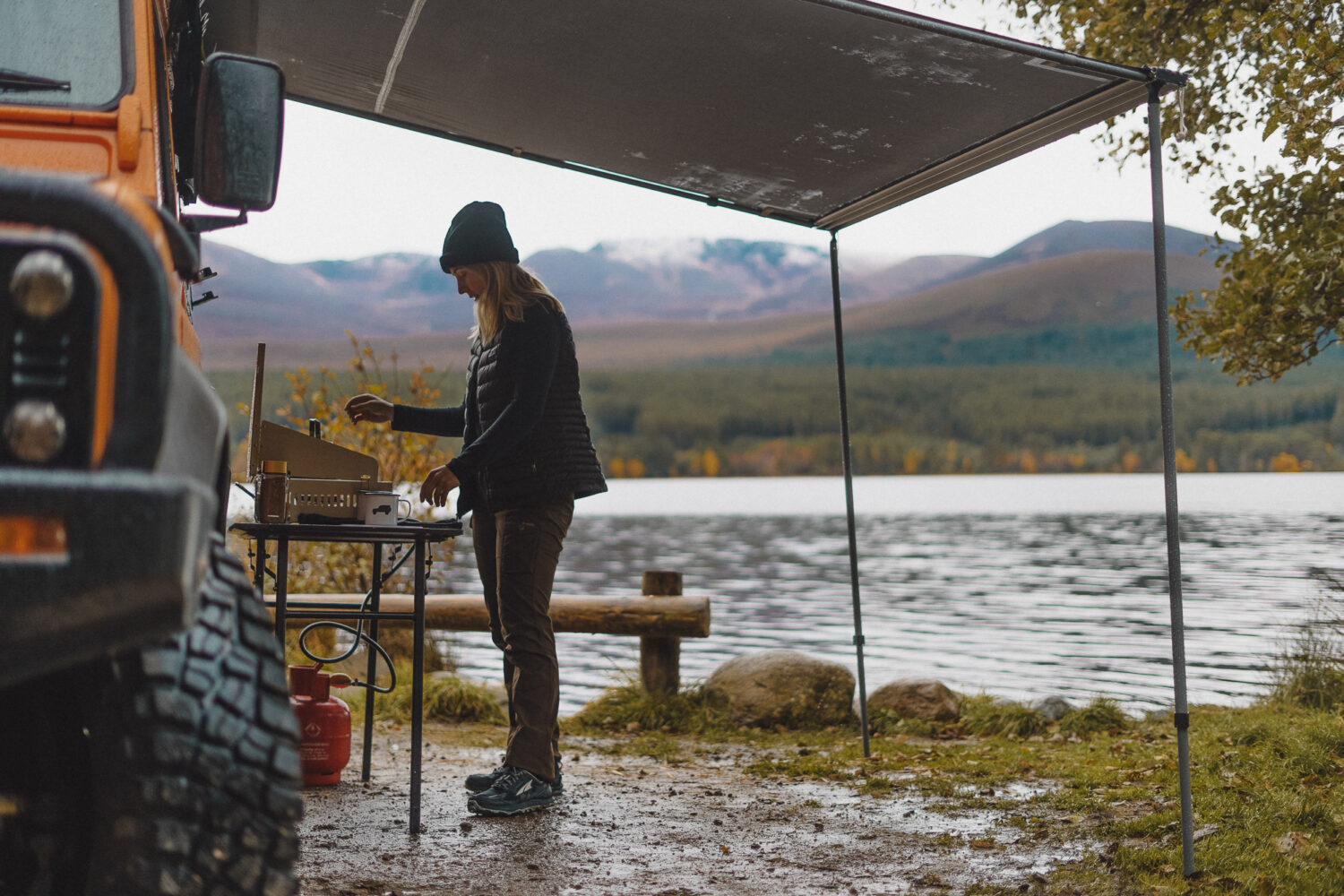
Our No Compromise Clause: We carefully screen all contributors to make sure they are independent and impartial. We never have and never will accept advertorial, and we do not allow advertising to influence our product or destination.



